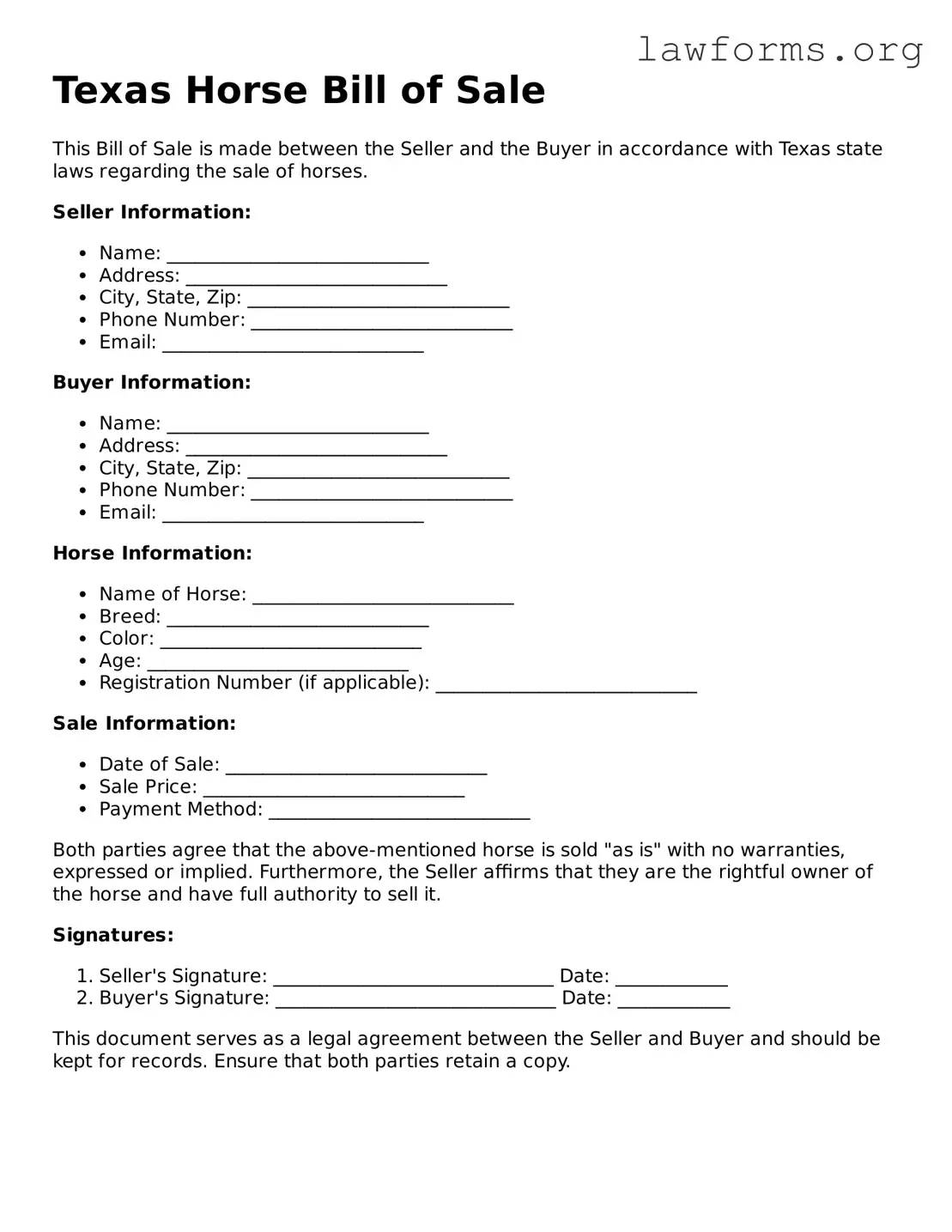Texas Horse Bill of Sale
This Bill of Sale is made between the Seller and the Buyer in accordance with Texas state laws regarding the sale of horses.
Seller Information:
- Name: ____________________________
- Address: ____________________________
- City, State, Zip: ____________________________
- Phone Number: ____________________________
- Email: ____________________________
Buyer Information:
- Name: ____________________________
- Address: ____________________________
- City, State, Zip: ____________________________
- Phone Number: ____________________________
- Email: ____________________________
Horse Information:
- Name of Horse: ____________________________
- Breed: ____________________________
- Color: ____________________________
- Age: ____________________________
- Registration Number (if applicable): ____________________________
Sale Information:
- Date of Sale: ____________________________
- Sale Price: ____________________________
- Payment Method: ____________________________
Both parties agree that the above-mentioned horse is sold "as is" with no warranties, expressed or implied. Furthermore, the Seller affirms that they are the rightful owner of the horse and have full authority to sell it.
Signatures:
- Seller's Signature: ______________________________ Date: ____________
- Buyer's Signature: ______________________________ Date: ____________
This document serves as a legal agreement between the Seller and Buyer and should be kept for records. Ensure that both parties retain a copy.
